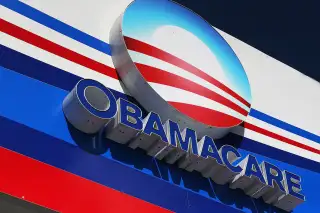Obamacare Signup Deadline Extended Two Days

If you procrastinated on buying health insurance, you weren't the only one — there was a big rush to enroll by Dec. 15, which was originally supposed to be the last day to buy coverage starting on Jan. 1. There was so much demand, though, that the Obama administration decided to extend the deadline another two days to give people more time to choose plans on the federal marketplace.
"Hundreds of thousands have already selected plans over the last two days and approximately 1 million consumers have left their contact information to hold their place in line," says Healthcare.gov CEO Kevin Counihan. "Our goal is to provide access to affordable coverage, and the additional 48 hours will give consumers an opportunity to come back and complete their enrollment for January 1 coverage."
If all of the 1 million people in line sign up for the first time, that could prove to be a huge boost to enrollment figures this year. After all, about 1 million new people signed up for health insurance on Healthcare.gov between Nov. 15 and Dec. 10.
The new deadline for the federal marketplace is 11:59pm PST on Thursday, December 17. But keep in mind that only 38 states use the federal marketplace; the other states have created marketplaces of their own. Some of those states — including California, Maryland, New York, Massachusetts, Rhode Island, Washington state and Minnesota — have given consumers more time. Check your state's marketplace to see if you have a different deadline.
But there's still more time to buy after that too. Open enrollment lasts until Jan. 31 for all states, but your plan may not start until later in 2016.
Here are some other things you should know:
How Obamacare works. The Affordable Care Act created government-regulated “marketplaces” where people can buy private health insurance plans with certain protections and minimum essential benefits. For example, insurers in the marketplaces cannot reject people with preexisting conditions, must offer free preventive services, and must put a cap on how much you’ll be forced to spend out-of-pocket on in-network services. Here’s more about what the law means for you.
How to sign up. Some states have created their own health insurance marketplaces, while others are using the federal government’s system. It doesn’t matter to you — just go to Healthcare.gov and select your state, and the portal will send you to the right website.
How to choose a plan. There are five kinds of Obamacare plans: Platinum, gold, silver, bronze and catastrophic. The metal levels refer to the amount of care you can expect the insurer to cover. Platinum plans are supposed to cover 90% of your health care costs, gold plans cover 80%, silver plans cover 70%, and bronze plans cover 60%. (Catastrophic plans, which are only available to people under age 30 or people with a hardship exemption, cover 100% of your care after you’ve paid $6,850 out-of-pocket.)
Why choose a plan that covers less? Generally, the less your plan is expected to cover, the less you’ll pay in premiums every month. Here’s how to weigh your choices and make the decision in 15 minutes or less.
How to get a discount. The federal government offers subsidies to help defray the cost of monthly premiums for health plans bought on the marketplaces. This year, individuals who make under $47,080 and families of four who make under $97,000 will be eligible for subsidies. Last year, 87% of Americans with Obamacare (on the federal exchange) qualified for a subsidy — a discount of $272 a month, on average, for individual plans. You can apply for a subsidy when you sign up on Healthcare.gov. Here’s more information about how subsidies work.
How to renew your coverage. If you bought an Obamacare plan last year, your plan will probably be auto-renewed. But take a few minutes to shop anyway. Even if you stay on the same plan, your premiums may increase, your benefits may change, and your subsidy could shrink. There’s probably a better deal out there too — in 73% of U.S. counties, consumers will be able to find a cheaper plan than their old one, according to the Kaiser Family Foundation. Here’s what to know.
FAQs
- What is Obamacare?
- What is open enrollment?
- Do I need health insurance?
- How much does Obamacare cost?
- Should I re-up with Obamacare?
- Should I just keep my old Obamacare plan?